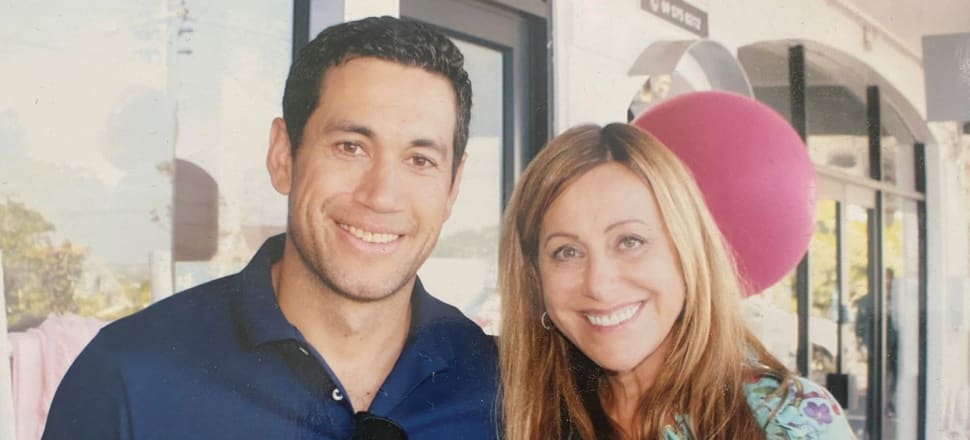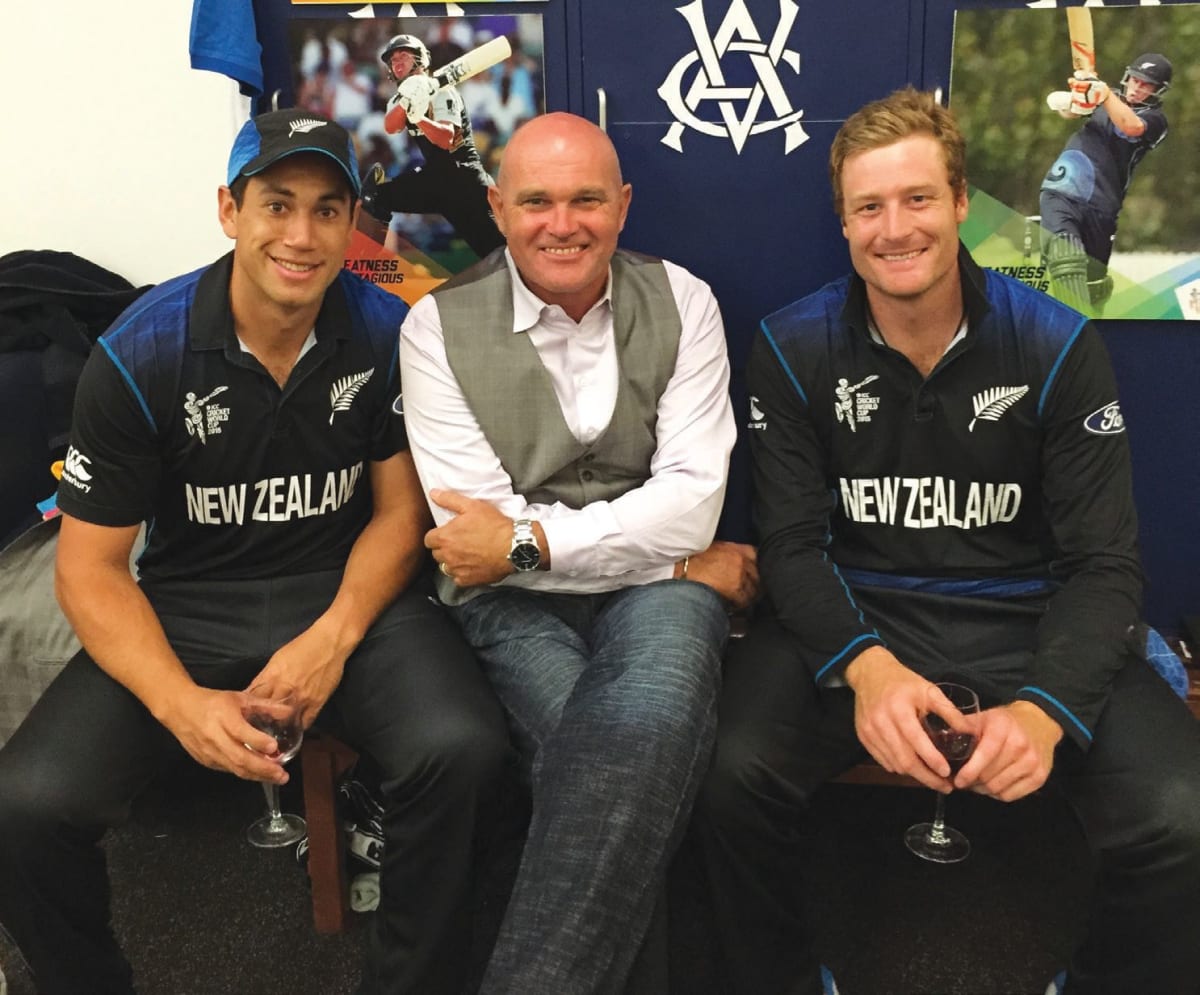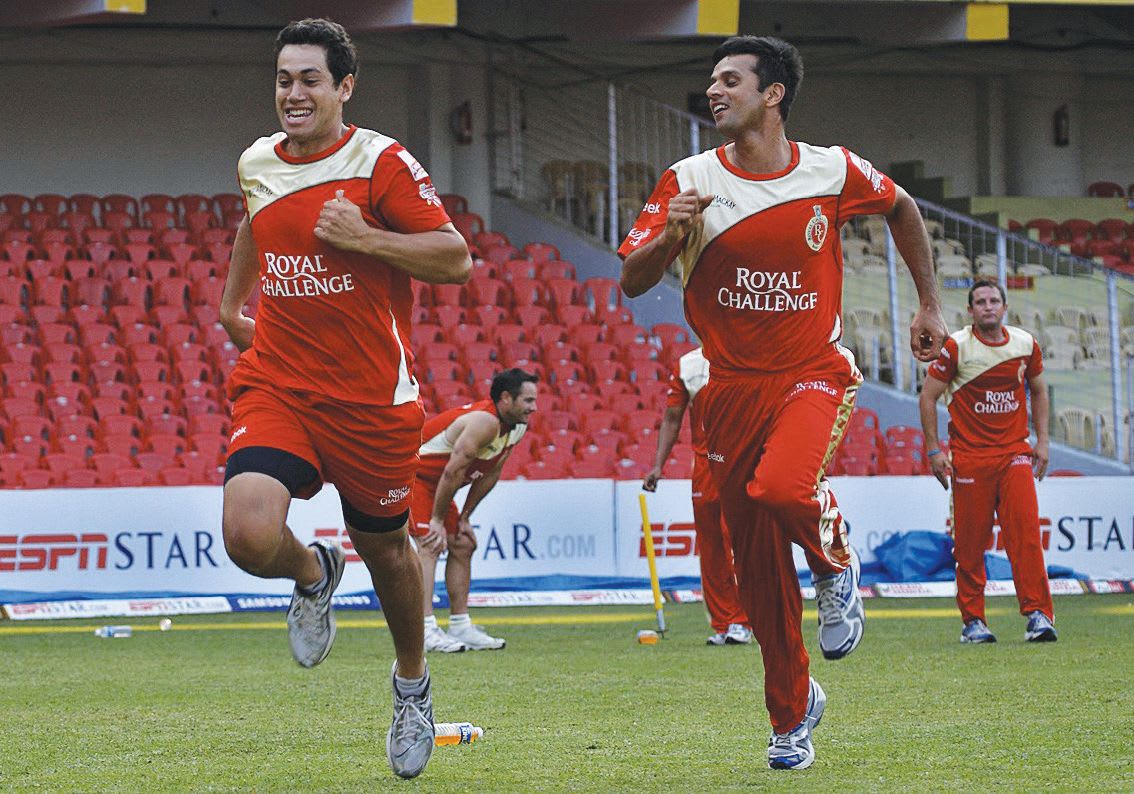
A review of the Ross Taylor bestseller
By the time of the 2012 Black Caps tour of Sri Lanka, a member of that touring party recently told me, it was a team on the verge of implosion. The momentous win against Australia that ended 2011 in a bloom of optimism had become a distant memory, fenced off from the present by a glut of loss. Public interest was so lacking that New Zealand Cricket (NZC) had deemed a media liaison role surplus to the tour’s requirements. “Another Black Caps defeat, but does anyone care?” the headline to one Stuff story asked. Even the sky had joined the chorus of bad news: until the last match of that Sri Lankan tour, the only games the team hadn’t lost were those ruined by the rain.
The definitive action occurred off the pitch, when coach Mike Hesson informed Taylor that he no longer wanted him as his captain. In his new as-told-to bio Black & White, Taylor recalls the meeting, in a Galle hotel room, days before the first test was to start: “‘It would be remiss of me,’ said Hess, ‘not to say what’s really going on. There are leaders and followers, and I think you’re a follower. There are senior players in the team who don’t want you as captain. It’s my job to make sure this team has a strong captain and you’re not a strong captain.’” (The italics are Taylor’s.) Taylor was “blindsided and in a state of shock” but determined to keep going until pushed by the NZC board, which would need to ratify Hesson’s decision. Taylor was to struggle on through the two tests, a lame-duck captain in charge of a dispirited, fractured team that, lame itself, limped into the crossfire of a 10-wicket loss in Galle. “I still don’t know how I captained that team knowing half the players didn’t want me, and the coach was actively engaged in making their wishes come true,” he tells his ghost writer, Paul Thomas.
Yet in the next test in Colombo, his last as captain of the side, Taylor was able to summon a tensile strength from reserves of fortitude not completely diminished by “two hours’ sleep every night for a fortnight”. He batted, and batted—mustering what his mentor, the late Martin Crowe, rated as one of New Zealand’s two best individual test performances. Taylor scored 142 in the first innings, 74 in the second. Given the circumstances, Crowe placed Taylor’s achievement alongside Sir Richard Hadlee’s 15 wickets in Brisbane in 1985 in the pantheon of great New Zealand test-match performances. New Zealand won and Taylor was player of the match. For those who wanted him gone, he says, it was “their worst nightmare”.
And how exactly did he achieve a feat rated so highly by the best batsman New Zealand had then produced? What did he summon from his bag of technical mastery to counter the cunning of Rangana Herath, then perhaps the finest spinner of the post-Shane Warne/Muttiah Muralitharan era, on a spinning pitch in the humid fish bowl of the P. Sara Oval? How did he focus through the stress that by tour’s end had reduced his weight to that of his 14-year-old self?
Unfortunately, Black & White doesn't really answer any of these things. “My job as a cricketer,” Taylor says, “was to score runs but there was definitely an element of ‘How did I do that?’” The closest the reader gets to a strategy or method that drove him through that test match was a mantra, bequeathed to him by Crowe, that echoed in his mind’s ear throughout his innings. “Don’t get out; just bat. Be there at the end of the day.”

It may be unfair to ask for more insight. “Athletes probably think and feel the fewest things of anyone at important times—their training sees to that,” writes Richard Ford in The Sportswriter, a novel he wrote after years in that profession. David Foster Wallace, reviewing an as-told-to memoir by tennis prodigy Tracy Austin, makes an adjacent point, more witheringly: “Great athletes usually turn out to be stunningly inarticulate about just those qualities and experiences that constitute their fascination.”
Perhaps, Wallace conjectures, what really goes through an athlete’s mind, as they attempt to strike a match-winning penalty through the distant uprights or make themselves the target for a cricket ball moving at the speed of thought, is “nothing at all”. Their training, as Ford would say, sees to that: Taylor’s boyhood evenings spent whacking a ball suspended in a stocking from the backyard kōwhai tree, accumulated teenage hours spent in the middle of Wairarapa and then Palmerston North cricket grounds, interminable net sessions in the corners of suburban parks in the settling dusk. Muscle memory flexed, honed and forged into instinct—and guided in the instance of that masterful performance by a flat phrase: “Be there at the end of the day.” Wallace again: “How, at the critical moment, can [athletes] invoke for themselves a cliché as trite as 'One ball at a time' or 'Gotta concentrate here,' and mean it, and then do it? Maybe it’s because, for top athletes, clichés present themselves not as trite but simply as true.”
A vanishingly small number of us know what it’s like to face 156 grams of cork and leather travelling towards us with enough force to break an arm—an injury Taylor suffered at the hands of a missile slung from the towering Afrikaans trebuchet of Morné Morkel—and Taylor never really lets us get close to the things I hunger to know most. I want the whole experiential ordeal of test cricket laid bare: how it feels to be the subject of the malevolent wit of a formation of Australian slip fielders as their shadows lengthen in the long heat of a Perth afternoon, say. Or give me the depth of emotion that trails in the wake of so triumphantly repelling the two very fast left-arm Mitchells, Johnson and Starc, in that same WACA cauldron, to make the highest score, 290, a visiting batsman has ever made in Australia.
Perhaps, as Wallace suggests, it’s because those things just are not there in the way I hope them to be when I, with an optimism somehow undiminished by experience, split the spine of another of the as-told-to cricket memoirs that populate my shelves. What we are left with—language like this to describe that Perth innings: “obviously one of my proudest achievements”—doesn’t span the distance I want it to. My issue, more largely, is with the conventions of a genre I always hope will give more than it tends to about how it feels to perform at a level most of us will only ever watch from the other side of a boundary rope.
And yet cricket is a sport, as its literature never wastes an opportunity to remind us, with one of the finest sporting literatures going. So, to counter Wallace, that complexity of thought and feeling is there: it’s in the writing of tragic, suicide-bound Peter Roebuck, say, who meditates on the grind of county game in It Never Rains: “Why was the game so easy yesterday? Why is it so impossible today? … It’s a cussed game. It can show you glimpses of beauty in a stroke perfectly played, perhaps, and then it throws you back into the trough of mediocrity.” Or in the memoirs of New Zealand’s Jeremy Coney, in which he reflects on how even his natural good humour was tested on the rack of test cricket on the subcontinent: “Why have I tried to dedicate a major part of my life to being good at something which is so hard that it’s impossible… My mind is trying to find something that doesn’t torment me so much. It would be so easy to return to being relaxed and happy and more human.” For the Greeks though, he notes in self-rebuttal, “good comes from suffering and pain”. It is of course no coincidence that the players that get me the closest to the game, such as Roebuck and Coney, are those who write—and whose writing, without the spectral intercession of a ghost-writer, builds a world where the reader feels welcomed, not pushed away by clichés, which, while perhaps useful for the athlete, remain for the rest of us bad writing that fails to fully realise what cricket at the highest level is really like.
But all of us know what it is to be locked within the limitations of our own personalities, and many of us have faced situations capable of breaking the spirit. Here, unlike on the cricket pitch, Taylor shares a level of expertise in common with his readers, and the man behind the tongue emerges most fully formed when the book turns to the workplace machinations, thwarted hopes and structural unfairness that constitute an accompanying narrative to Taylor’s cricket career. “You’re half a good guy, Ross,” he recalls that a teammate used to tell him, “but which half is good? You don’t know what I’m referring to.” Taylor—with a Samoan mother and a Pākehā father—was convinced he knew exactly. There were further examples of clunky insensitivity in the Black Caps environment, where Taylor, just the second man of Samoan heritage to play for the national team, often felt himself to be “a brown face in a vanilla line-up”.
"You’re half a good guy, Ross,” he recalls that a teammate used to tell him, “but which half is good? You don’t know what I’m referring to.”
When the captaincy came to him as a 27-year-old, he had what he calls “a cultural issue”: “That deeply ingrained principle of respecting your elders worked to my detriment as a captain.” He was uncomfortable addressing the senior players, a shadow of the young boy who kept his eyes to the classroom floor to deflect his teachers’ attention still there with the man he became. He was nervous about talking in front of the team and he found stewing over what he was going to say a waste of his mental energy. Even the insubordination he witnessed from a handful of players on the ill-fated tour of the West Indies in 2012 went unaddressed by Taylor—“if that had happened to Brendon [McCullum, his successor as captain],” he writes, “he would have faced it front on.” The captaincy, he concludes, came too early for him; he doesn’t quite say as much, but one gets the sense that in the vacuum that his insecurity created, the team had lost its way.
Team spirit, observed Spurs striker Steve Archibald, is an illusion glimpsed in the aftermath of victory. It was in short supply during Taylor’s tenure as captain, and when Hesson replaced John Wright as coach—and then failed to convincingly back Taylor as his preferred captain, along with others in the NZC administration—Taylor divined what was coming. He called his father after one early meeting with Hesson to predict he wouldn’t be captain in a year’s time. So when that guillotine fell, in Taylor’s hotel room, the surprise wasn’t so much that it had happened, but that it had happened then, away from family and support, just after the death of an adored grandmother, still with weeks left to tour alongside a bunch of players he felt had aligned with McCullum. He had felt unsupported as captain; now he felt abandoned.
John Buchanan, then Director of Cricket for NZC, called Taylor’s removal “just an ambush, incredibly clandestine”. “It was about the way it was done,” Taylor writes, “the intrigue, the undermining, the hidden agendas. And, after it was done, it was about the utter indifference to the impact it had on me and those close to me.” Gary Hermansson, a sports psychologist who had long worked with Taylor, stops just short of diagnosis: Taylor had “all the elements of post-traumatic stress disorder”: “the empty despair, the sense of rejection”. Taylor writes that he lost the instinct for trusting the things people said to his face. Public opinion fell overwhelmingly in behind him, and against McCullum and Hesson. NZC found itself in a public relations quagmire over its treatment of Taylor, regarded as one of the nicest guys in the sport. “The game in New Zealand has been severely damaged,” Crowe wrote. “Permanently, I believe… those directly accountable should go, simply as rightful punishment.”

Taylor made himself unavailable for the following tour to South Africa, where in the mythology of latter-day Black Caps success, the McCullum-led march to respectability and then triumph began with a humiliating 45 all out in Cape Town on the morning of the first test. In Taylor’s re-emergence in the team for the following series, naturally alienated from the leadership clique and wary of being seen to be fomenting dissent, his natural inclination for keeping to himself intensified. Australian cricket writer Gideon Haigh writes that in no other sport do players come to know each other as well as in cricket, “the most protracted, most intermittent, most ceremonial of games”. For Taylor, though, there remained men with whom he “played a lot of international cricket… who still don’t know what went on and what I was dealing with”.
He withdrew into the paradox of cricket: a team game resting squarely on highly visible individual performance. “The batsman facing the ball,” writes CLR James in his classic Beyond a Boundary, “does not merely represent his side. For that moment, to all intents and purposes, he is his side.” Taylor became “very stats driven”, like Sir Richard before him. And the stats soon began to tell a very pleasing story, and Taylor’s runs a pillar around which the team’s burgeoning success was built. The way Taylor had been deposed was buried in the public mind as the portfolio of that success broadened, especially during the fever dream of the 2015 World Cup at home, when New Zealand charged to the final. McCullum’s leadership and vision was lauded from all quarters of the cricket world. “All the questions,” Taylor recalls, “that had swirled around the change of captaincy, the way it was done and the manner in which some of the protagonists had behaved became irrelevant.”
He sought advice from a mental skills coach about being an outsider in a team environment, who told him to find a way to “keep your head down, bite your tongue and get on with it”. Which Taylor did, growing into an undoubtedly great New Zealand batsman—he has the most test, ODI and overall runs for New Zealand, along with a host of other national records—in the greatest team this country has produced. The highlights are too numerous to do anything but cherry pick a few personal favourites: that talent-announcing 154 not out at Old Trafford, the audacious brutality of his 2011 World Cup century against Pakistan, centuries, including a double, in three consecutive tests against the West Indies in 2013, the WACA 290, his match-winning 181 after injury essentially reduced him to the use of one leg against England in Dunedin in 2018. And of course the World Test Championship-winning runs, clipped off his legs to the boundary.
Has a cricket ball ever plotted such a redemptive course over the grass, eclipsing the heartbreak of the agonising loss in the final of the 2019 World Cup and of the 2015 final before it? And for Ross Taylor adding a late-career highlight to which, one hopes, the earlier disappointments now feel like mere stepping-stones in a narrative arc that ended at the top. There’s that photo of Taylor and captain Kane Williamson walking off victorious, Williamson’s right hand squeezing Taylor’s shoulder, the sun-crinkled crow’s feet at the corners of each man’s eyes scrunched into prominence by their winning smiles. Taylor: “I said, ‘Well, we’re bloody world champions and no one can take that away.’ Kane grabbed me and said, ‘Fuck, yeah.’”
Ross Taylor: Black & White by Paul Thomas (Upstart Press, $49.99) has held the number one position on the non-fiction bestseller list these past three weeks, and is available in bookstores nationwide.







